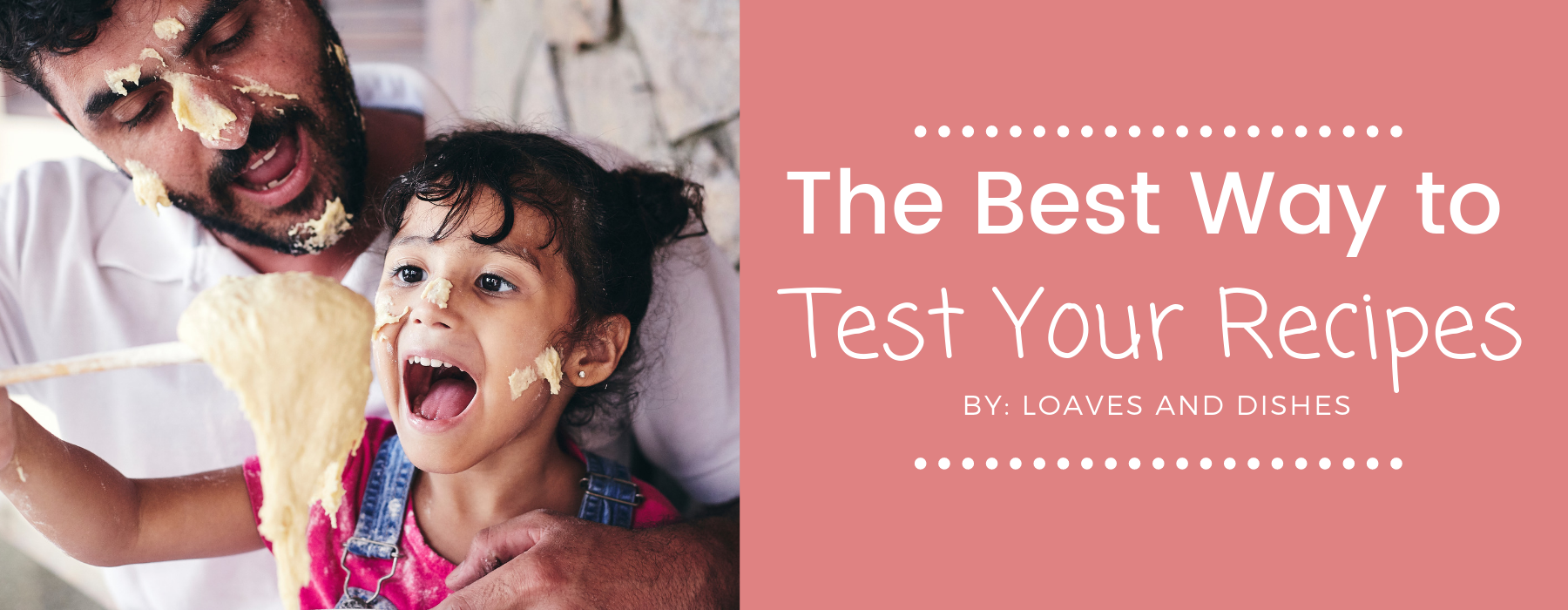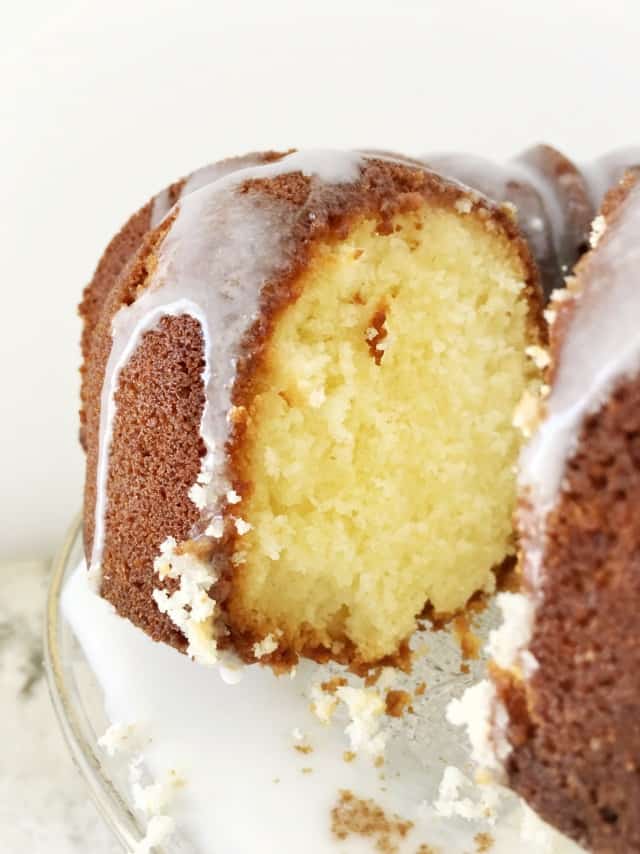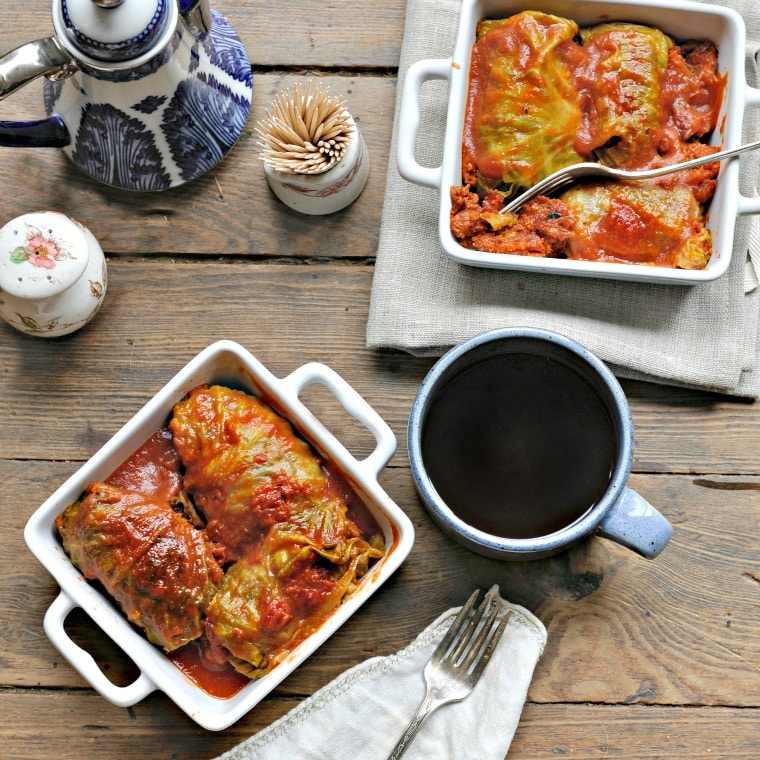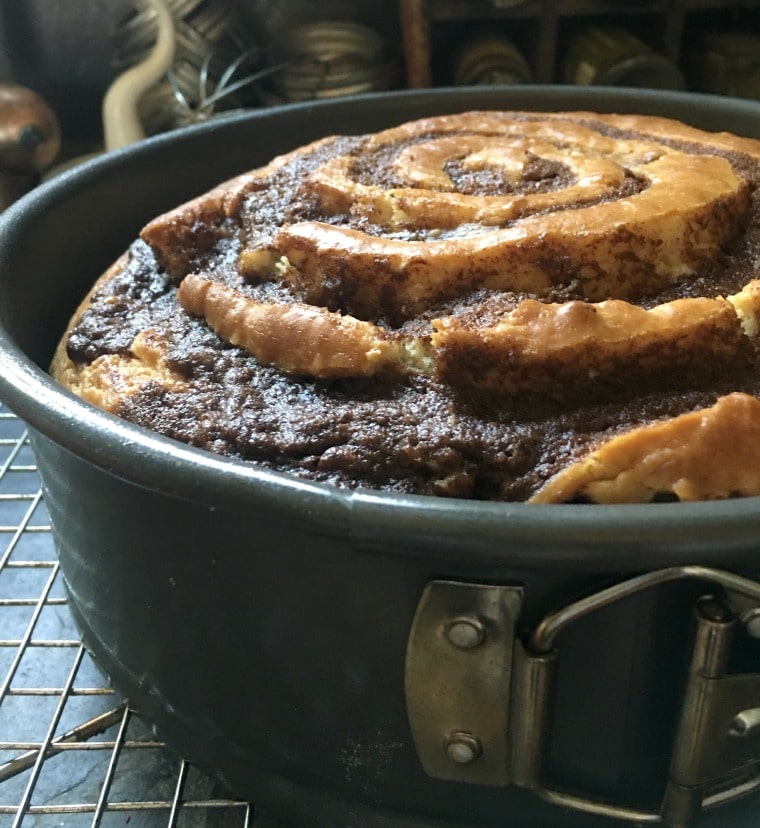The Best Way to Test Your Recipes
Guest Blogger - Jun 07, '19 - Cookbook Ideas - Guest Blog
We’re pleased to introduce our guest blogger this week: Wendi Spraker. Wendi is the CEO, Food Writer, Recipe Developer and Dish Washer at Loaves and Dishes! She has a passion for food, recipes and keeping thing delicious.
How many times have you come across an old recipe stuck away in a decrepit family bible or found an ancient cookbook at a yard sale with interesting recipes hidden inside? Maybe you found a recipe that YOU created tucked away in your kitchen and it reads simply as a few ingredients and measurements with no instructions that someone else could EVER follow? If you are a cooking enthusiast and recipe addict like I am, then I suspect this has happened WAY MORE than is comfortable to admit!
A recipe I am so thankful, I have ready to share - Mamaw’s Lemon Pound Cake Recipe.
The problem is, when you get right down to it, that we want to be able to SHARE our recipes and thus, language must be standardized, ingredients must be called by a current name (Oleo vs. margarine anyone?) and measurements must be done in units useful for the person using your recipe ( imperial versus metric). How do we go about testing recipes to find the best way to make a dish using current language, methods, measurements, and ingredients?
Fortunately, it isn’t terribly difficult to update or write a new recipe but it DOES require testing. Once you have the recipe dialed in so that you can make it consistently THEN you want to write it down so that you can share the recipe with others.
I write recipes for a living over at Loaves and Dishes. Many of the most popular recipes on my site are family classics that were originally written in another era with ingredients called by another name or with ingredients that are no longer available thus requiring a modern day rewrite (Hello Collard Greens and Pinto Beans). Sometimes, my recipes are just something scribbled on scrap paper to jog my own memory (Sweet Tea anyone)?
What follows are some tips that have helped me sort all of this information out and write recipes that anyone can follow.
For the initial recipe attempt...
- Take time to investigate ingredients and find the closest thing that is available today. For example, in my mother-in-law’s Banana Pudding recipe, cool whip no longer comes in the size stated in the recipe. This required experimentation on my part so that my readers could use ONE tub of current day sized cool whip.
- The FIRST time you make a recipe, try to make it as closely as you can to the original recipe, using the correct ingredients in the proper amounts. There’s going to be time for experimentation and updating later. Let’s just get the basics down first.
- As you go through the recipe the first time, keep a paper copy in your kitchen and jot down notes and thoughts as you go so that you’ll know what you had to change and what you think might work better. Never try to rely on your memory, sometimes things get a little crazy in the kitchen!
- Take a few photos just for your own reference while making this initial recipe. These don’t have to win a photography award, simply capture photos of the consistency of anything that is mixed together, what something looks like when you first pull it from the oven and anything that seems to surprise you with its results.
- After you are finished with the initial test run and tasting, take a few minutes to write down your summary of the dish. What you think might work better next time, baking times, etc.
Another recipe that I've tested and is ready to share - Classic Cabbage Rolls.
After you have collected all of your thoughts on the first try, think about the things that must change. Write those into your recipe using the following list as a guideline for writing your rough draft recipe. Then, wait for a week or so before you try making the recipe again. On the second recipe test, use and follow your own recipe. Again, do so on paper and keep a pen handy while cooking so you can write notes to yourself as you go.
- The ingredients list should be written in the order that you will use the ingredients. For example, if your recipe browns the pot roast in oil before placing it in the crockpot, you will want to list the oil as the first ingredient, then the roast.
- When listing the ingredients, be as specific as you can and make sure to include any preparations that must be made to the ingredient. For example, if your recipe calls for a whole clove of finely minced garlic, the ingredient will appear like this: 1 garlic clove, minced fine. This is standard recipe language.
- To include water or not in the ingredient list when it is required for the recipe? Some recipes do and some do not. I always do simply because I do not want my reader to be confused and surprised once they get to the instructions if they need to add water during a certain step. Some recipe authors do not agree with this and do not include water in the ingredients list. This is your decision, but always keep the person making the recipe in mind.
- When writing instructions, write simply and plainly. Have one action per instruction. For example, step one is usually something like Preheat the oven to 350 degrees. Step two is along the lines of: Prepare a 9 x 12 baking dish with non-stick spray and then set the pan aside. There are plenty of recipe authors who include multiple actions in one step (Ex. Preheat the oven and prepare a 9x12 baking dish). Again, just consider your reader first.
- When writing your ingredients list, if one ingredient is used two times in the recipe you will need to decide how you want to list it. The common method is to indicate that the item is “divided” in the ingredient list. However, this is YOUR recipe and if you want to list the item twice to avoid confusion, feel free to do so.
- Include a notes section at the end of the recipe and be sure to incorporate the things that were surprising to you, substitutions that can reasonably be made or items that are OK to leave out if not available. The general rule of thumb is, if you needed to know the information to make the recipe a success, someone else will too.
- Finally, the real test of your written recipe is to have someone else make the recipe using your instructions. Ask for honest feedback of both the cooked item as well as the written recipe. Ask what is clear, what isn’t clear and inquire about any changes they would make to the recipe. You’ll be surprised by what you hear.
Before you begin on this wonderful odyssey of recipe writing, I thought that you might want to just think about a few things.
These are my Pro Tips:
Recipes follow a format where ingredients come first and instructions second. There is a vocabulary that comes with writing and testing recipes. You will want to pick terms and stick with them for all of your recipes.
When testing a new recipe, you’ll want to clear your mind of distractions. Put the phone on vibrate, play some calm music and plan to enjoy your time in the kitchen. It is very difficult to test a recipe with the cat under your feet, a hungry belly and kids fighting in the next room.
Decide early on if you will remind the reader in the steps to do things like “mince the garlic” or if you will just assume that they understand that they need to prepare all ingredients before starting the recipe. Once you decide, stick with what you decide for all of your recipes.
Taste your own recipe at each step (unless doing so could endanger your health. (e.g. Don’t taste raw eggs). You’ll want to know how something tastes as you make adjustments and move to the next step. This can be very valuable information to share in your recipe.
Finally, if you plan to share your recipes with the world, the most sage advice I ever received is this…..
“You can be the most wonderful, freshest, firmest, fleshiest and beautiful peach that ever came into existence and there will STILL be people who don’t like peaches”.
Bonus: one more delicious tested and ready recipe - Cinnamon Roll Cake From Scratch!
All your recipes won’t please everyone all the time. It’s not personal and you shouldn’t take it as such. Are YOU happy with the recipe? Did you notice that most people cleaned their plates when you served the dish? Then don’t worry about a single negative comment. You are the one who has put yourself on the line to offer something to others. You have done a thing to be proud of. Hold your head high and move forward.
Consider for just a moment what recipe testing means, literally, to the world. Think of ALL of the wonderful dishes that you have ever enjoyed. Every single one of those recipes started as a test recipe in someone’s kitchen somewhere.
Where would we be if cooks hadn’t experimented with multitudes of flavors? I think about this every time I add lemon juice to a savory dish to brighten the flavor or sneak a pinch of salt into a dessert item. How GLORIOUS the process to find new taste sensations!
Without recipe testing, none of that would be possible. I wish you all the best in your recipe testing and most of all I encourage you to let your wild side loose, express yourself, experiment and go all out. The world needs you!
As Daniel Tompson once said, “A recipe is a story with a happy ending!”
Make sure to follow Wendi for more inspiration and recipes!
Instagram | Pinterest | Facebook | Twitter
Next: Measuring 101



